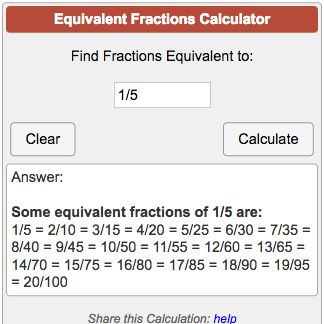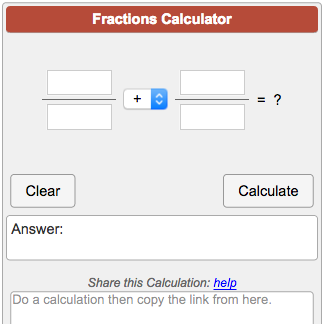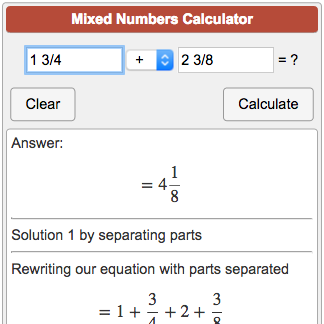2/6 is a simple fraction in which the denominator is 6 and numerator is 2. It is also known as a “mixed number” and can be written in other forms such as 0.33 or 33.3%. This fraction can be used to represent a variety of ideas including division, ratio, probability and more.

Table Of Content:
- Express 2 divided by 6 as a fraction. [Solved]
- Fraction Calculator
- Equivalent fractions for 2/6
- Fraction calculator - calculation: 6/2
- Equivalent Fractions Calculator
- Fraction calculator - calculation: 1/6 divided by 2
- Fractions Calculator
- Fraction calculator - calculation: 2/6+2/6
- Mixed Numbers Calculator - Fractions
- Murine Models of Heart Failure with Preserved Ejection Fraction: a ...
1. Express 2 divided by 6 as a fraction. [Solved]
https://www.cuemath.com/questions/2-divided-by-6-as-a-fraction/
Let us write 2 divided by 6 as a fraction. The value of 2 divided by 6 as a fraction is 1/ 3.
2. Fraction Calculator
https://www.calculator.net/fraction-calculator.html
Unlike adding and subtracting integers such as 2 and 8, fractions require a common denominator ... In the example above, the denominators were 4, 6, and 2.
3. Equivalent fractions for 2/6
https://coolconversion.com/math/equivalent-fractions/__2/6_
Read more on how to find the equivalent fractions for 2/6 or for any other fraction, below on this page. Easier list to copy and paste: 1/3, 2/6, 3/9, 4/12, 5/ ...
4. Fraction calculator - calculation: 6/2
https://www.hackmath.net/en/calculator/fraction?input=6%2F2
Calculation: 6/2 - fraction calculator. ... 6/2. This calculator performs basic and advanced fraction operations, expressions with fractions combined with ...
5. Equivalent Fractions Calculator
https://www.calculatorsoup.com/calculators/math/fractionsequivalent.php Fraction - like 2/3 or 15/16; Mixed number - like 1 1/2 or 4 5/6; Integer - like 5 or 28. What are Equivalent Fractions?
Fraction - like 2/3 or 15/16; Mixed number - like 1 1/2 or 4 5/6; Integer - like 5 or 28. What are Equivalent Fractions?
6. Fraction calculator - calculation: 1/6 divided by 2
https://www.hackmath.net/en/calculator/fraction?input=1%2F6+divided+by+2
(1/6) : 2 = 1/12 ≅ 0.08333333. Spelled result in words is one twelfth. How do we solve fractions step by step? Divide ...
7. Fractions Calculator
https://www.calculatorsoup.com/calculators/math/fractions.php Use this fraction calculator to add, subtract, multiply and divide fractions. ... ab−cd=ad−bcbd. Example steps: 26−14=(2×4)−(6×1)6×4. =224=112 ...
Use this fraction calculator to add, subtract, multiply and divide fractions. ... ab−cd=ad−bcbd. Example steps: 26−14=(2×4)−(6×1)6×4. =224=112 ...
8. Fraction calculator - calculation: 2/6+2/6
https://www.hackmath.net/en/calculator/fraction?input=2%2F6%2B2%2F6
Calculation: 2/6+2/6 - fraction calculator. The result is 2/3 ≅ 0.6666667 = two thirds.
9. Mixed Numbers Calculator - Fractions
https://www.calculatorsoup.com/calculators/math/mixednumbers.php Do math with mixed numbers and mixed fractions such as 1 1/2 or 3 5/8. ... 1 2/6 + 2 1/4 = 8/6 + 9/4 = (8*4 + 9*6) / 6*4 = 86 / 24.
Do math with mixed numbers and mixed fractions such as 1 1/2 or 3 5/8. ... 1 2/6 + 2 1/4 = 8/6 + 9/4 = (8*4 + 9*6) / 6*4 = 86 / 24.
10. Murine Models of Heart Failure with Preserved Ejection Fraction: a ...
https://pubmed.ncbi.nlm.nih.gov/29333506/ Dec 25, 2017 ... JACC Basic Transl Sci. 2017 Dec;2(6):770-789. doi: 10.1016/j.jacbts.2017.07.013.
Dec 25, 2017 ... JACC Basic Transl Sci. 2017 Dec;2(6):770-789. doi: 10.1016/j.jacbts.2017.07.013.
What does 2/6 mean in math?
2/6 represents a fraction where the numerator (the number on top) is equal to 2 and the denominator (the number at the bottom) is equal to 6. This means that when you divide two by six, you get one-third as an answer.
How do I calculate 2/6?
To calculate 2/6, you can either use long division or simplify the fraction by dividing both numbers by their common factor of two. After doing this, your result will be 1/3 which simplifies to 0.33 or 33.3%.
How do I write 2/6 as a decimal?
To write 2/6 as a decimal, divide the numerator (2) by the denominator (6). This will give you 0.33 which can be written as 33.3%.
What are some real-world examples of using a fraction like this?
Fractions like this can be used for many different things in everyday life such as figuring out unit prices at stores or even calculating recipes when cooking or baking something new! They also come in handy when dealing with percentages and ratios from time to time.
What form does 2/6 take when shown graphically?
Graphically, fractions like these are usually illustrated using circles or rectangles divided into sections which help make it easier to understand how fractions work with each other when multiplied or added together.
Conclusion:
In conclusion, understanding fractions like 2/6 are important since they are commonly used for various mathematical operations and can often be found within everyday applications of arithmetic problems!
